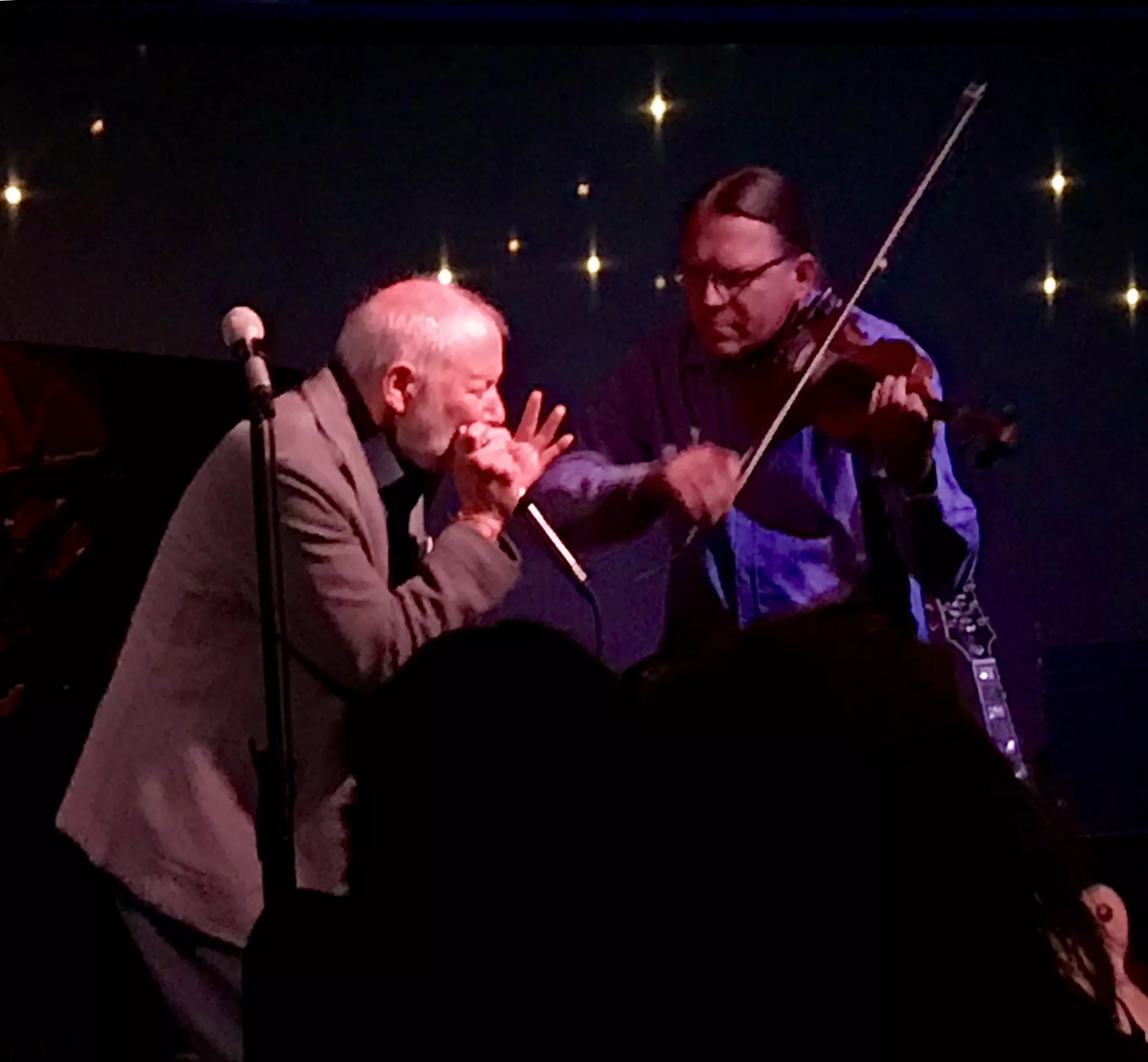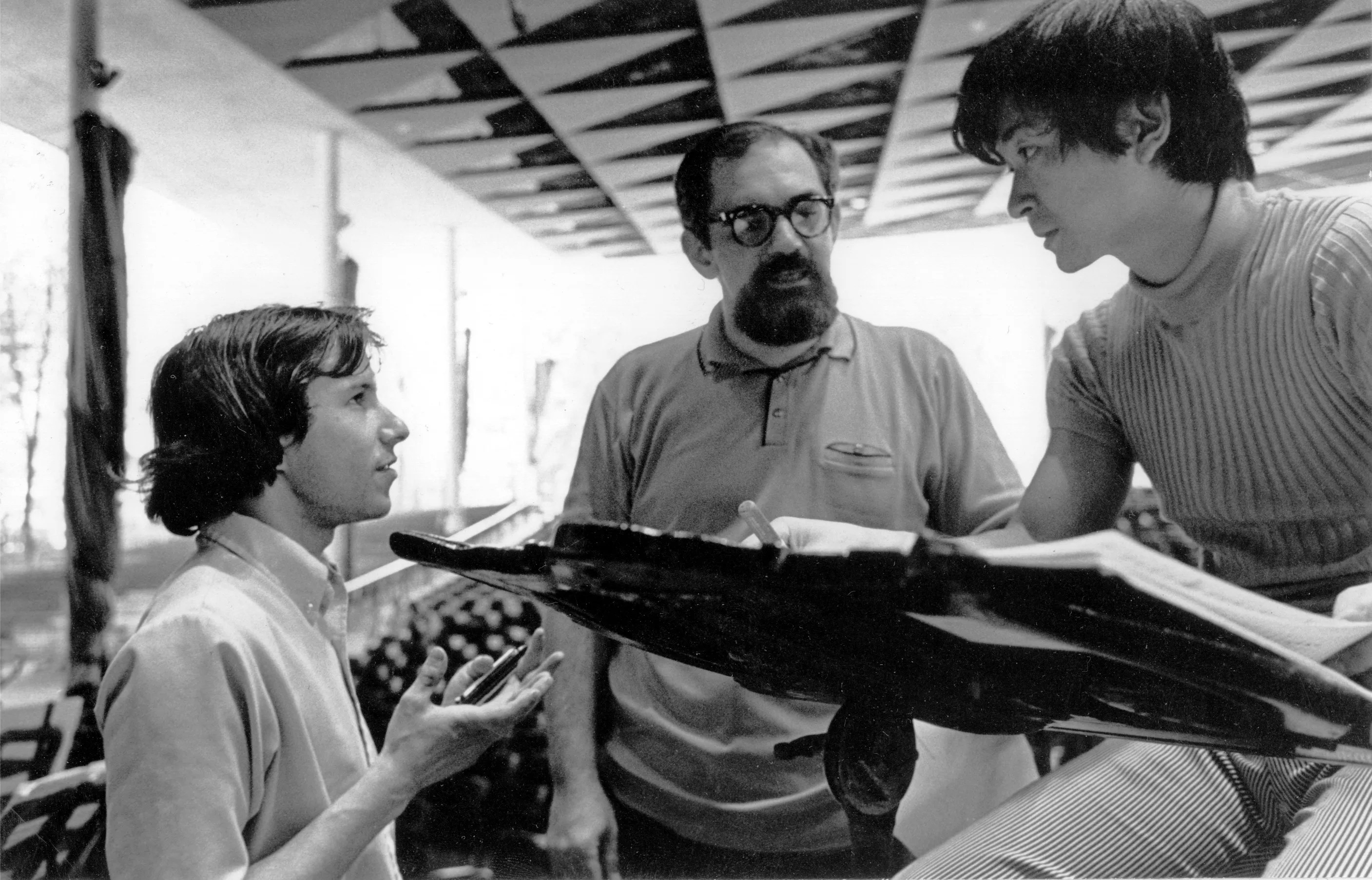
Holly Siegel

Audio By Carbonatix
About a year after harmonica player Corky Siegel and guitarist Jim Schwall formed the Siegel-Schwall Band in 1964, the group landed a weekly gig at Pepper’s Lounge in Chicago, a mecca for blues masters of the time. The first night of the residency, Muddy Waters sat in, and over the next year, other legends like Howlin’ Wolf, Willie Dixon, Junior Wells and Buddy Guy would stop by to play during the Thursday night sessions, which started at 9 p.m. and ended at 4 a.m.
“That was incredibly good fortune,” Siegel says. “That never happened to any other blues artist. They usually sat in with the blues masters. It was very rare that it was the other way around, where it was a regular thing for us.”
At the time, Siegel – who performs at Swallow Hill Music on Saturday, February 1, with jazz violinist Randy Sabien – and his bandmates were all in their early twenties and fairly innocent.
“We were these white kids, crossing the tracks, going into neighborhoods we weren’t supposed to be in,” Siegel recalls. “And we were loving these people, and I think they appreciated that we loved them. That was true of all the white blues guys at the time. We really loved these blues masters. And they returned the love, because they saw that. That was true with everyone.”
This year, make your gift count –
Invest in local news that matters.
Our work is funded by readers like you who make voluntary gifts because they value our work and want to see it continue. Make a contribution today to help us reach our $50,000 goal!
Siegel recalls Howlin’ Wolf, who would bring the Siegel-Schwall Band on the road with him, saying he loved the band because it didn’t sound like the other blues guys of the day and that the group brought something really different to the music.
“‘It seems like you’re coming right from the heart,'” Siegel says Howlin’ Wolf told him. “‘You’ve got tons of soul, and you’re doing something different, and I love that.’ A lot of people loved it, and a lot of people didn’t love it.”
Siegel says he and his fellow musicians weren’t bringing something different to the music on purpose, but they just ran with it and didn’t copy other blues players. “We weren’t worried that if we don’t do this, someone’s going to say that’s not blues,” he says.
One thing that made the Siegel-Schwall Band different was that he and Schwall played mostly short notes, which made the band the sound really tight.
“If you could start the song tight and end it tight and you could do some tight things in the middle, it sounds tight,” he explains. “That was one of the things that was different. The other thing was that we weren’t really thinking of ourselves as a blues band. We were inspired by blues. We were playing a lot of blues songs. A lot of the songs we wrote were blues-style songs, but we weren’t trying to fit into a particular tradition.”
After the Siegel-Schwall Band’s residency at Pepper’s Lounge ended, in 1966 the group got gigs at Big John’s, which Siegel says was ground zero forthe rock-blues explosion, and Mother Blues. That year, they noticed a guy who would come to both of the clubs – which were just a few blocks from each other – night after night to listen to the band. One night, the man approached Siegel and said, “I’d like your band to jam with my band.”
“I’m thinking, ‘Who is this guy?'” Siegel says. “I said, ‘Who’s your band?’ He said, ‘It’s the Chicago Symphony.'”

Corky Siegel (with harmonica), William Russo and Seiji Ozawa preparing for a rehearsal with the Chicago Symphony at Ravina, July 1968.
Dave Noble
Turns out the guy was famed Japanese conductor Seiji Ozawa, guest conductor of the Chicago Symphony at the time, and he wanted to merge blues and classical. Before long, they got the ball rolling, meeting at Big John’s with composer William Russo. Siegel had the idea for a piece that Charles Ives wrote for two marching bands that played at the same time, but in different keys and different tempos.
Siegel says he wanted to have the Siegel-Schwall Band play a blues ostinato (a repeated phrase) and have the symphony play classical music over that.
“And then we’ll have the symphony do a classical ostinato, and we’ll plays blues improvisations over that,” Siegel remembers thinking. “Already there’s three ideas. And then you can take all the multiples of those and all the variants. I said the one thing that we have to do is, we have to make sure we’re writing music for everyone to not like. And they loved it. They totally loved it.”
Following the success of the collaboration, the band received invitations to perform with symphonies all around the world, including four concerts with the New York Philharmonic at Lincoln Center.
“We get on stage and the audience sees that we’re hippies,” Siegel recalls. “Long hair. Amplifiers on stage. This was 1969, the middle of the establishment against hippies. The audience just started booing and hissing, and they weren’t going to stop. Seiji comes over and says, ‘What should we do?’ and I said, ‘Well, let’s just play music. The music will take care of it.’ He knew that. He was just being a mentor to me. He knew that what we had to do was play the music. It had never happened to him before.”
Siegel says once they started playing, the audience calmed down, and once the performance was over, the audience went nuts.
“The president of the symphony association said it was the longest and most intense standing ovation he had ever heard in Lincoln Center,” Siegel says. “He said the only thing that ever compared to it was the performance at Carnegie Hall with Caruso.”
The concert showed Siegel how powerful music could be, and that it could bring people with different political views together.
“I thought, I’ve got to keep doing this,” he says. “What we were doing, first of all, was exposing the blues in those days to audiences who would have never had any interest in it. And all of a sudden, they want to know about Howlin’ Wolf and Muddy Waters and B.B. King and all those people.”
Since then, Siegel has released a number of records with the band while also putting out albums under his own name, as well as with his Chamber Blues project, including the ensemble’s most recent, Different Voices.
For Saturday’s performance with Sabien, who founded Berklee College of Music’s Jazz Strings program, Siegel says to expect plenty of spontaneity.
“We’ve done this so many times before,” Siegel says of performing with Sabien. “And we know that the spontaneity is going to take us to some really amazing places. But as much as the audience is going to be surprised over and over during the performance, Randy and I will also be surprised. Everyone will sort of experience that together.”
Corky Siegel and Randy Sabien play at 8 p.m., Saturday, February 1, at Swallow Hill Music, 71 East Yale Avenue. Tickets are $24-$26 and available at Eventbrite.